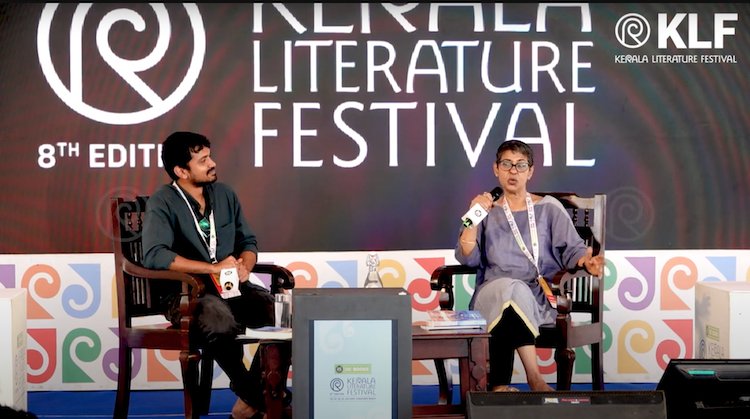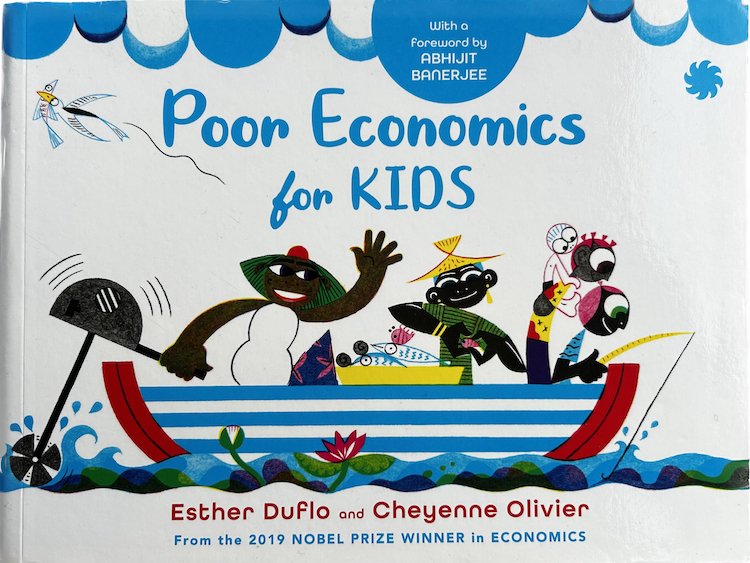“So many literature festivals are going on in Kerala. What I like is that they are secular festivals – you mingle and bond over your shared love for literature without any constraints of caste and creed. You communicate and connect with readers and share your ideas and views with other authors.” – Binyamin in conversation with Priyanka Tanwar at the recent KLF in Kozhikode
The 8th Kerala Literature Festival (KLF) in Kozhikode was a celebration of science, poetry, music, theatre and the freedom of expression with few limits or boundaries beyond the warming sun, the seascape and the horizon. After a retired Indian foreign secretary touted his book in a conversation with a journalist from the platform, a member of the audience asked why in his discussion of contemporary events, he had neglected to mention our government’s stand on the raging issues of the day, including the genocide in Gaza.
The audience roared in approval at the question and met the roundabout and evasive strawman answer echoing the silence of the government – with a stony silence. In another session, and in ironic contrast, the senior diplomats from Ireland and Norway were quite forthright on their governments’ stand and thereby laying bare the complicity of various countries with the war crimes in Palestine.

The knowledgeable crowds ebbed and flowed, quickly filling the sessions they most wanted to take part in. Without question, the Malayalam poets, storytellers, and musicians were the most popular but many of the sessions in English were equally fascinating. The update on the archaeology of Harappa and other South Asian civilizations and sites with archaeologists K Krishnan and Robin Coningham and moderator Sam Santosh revealed that there is still much to dig and determine about a complex agglomeration that covered 3 million square kilometers 5,000 years ago. The challenge of deciphering the Indus Valley Script remains since all the engraved stone scripts discovered thus far are shorter than 13 characters and no bilingual inscription has been found.
Although quite a bit of pseudo-research posing as archaeology has become an accompanying resource for the destruction of structures to establish and reconstruct a more fundamentalist history, the archaeologists stuck to evidence-based surmises. Acknowledging the search for roots and identity in the public imagination as the number of finds and digs in the subcontinent and further north increase, Coningham noted, “Now, everyone wants to be a part of the Harappan civilization.”
Sticking to the evidence is challenging, as the rituals and practices of the Harrapan are frustrating to archaeologists who often rely on human remains buried with artifacts and large tombs of kings and queens. Coningham suggested while Harappa’s end was likely due to a combination of reasons an important possibility might simply be the diminishing of resources to support its further development. Moreover, the lack of elaborate memorials, armaments, and memorabilia may indicate that the Harappans shunned both wealth and war.

Miriam Joseph’s fascinating conversation with the environmentalist Yuvan Aves about his book Intertidal – The hidden world between the land and sea immediately made you want to rush out and buy the book and read it. Aves’ connectedness with Tamil Nadu forests and coastal areas and their species has led to the development of an action pedagogy for children and new ways of seeing and discovering.
Aves noted the need to individually engage with local observations and changes in our land and seascape, “Climate change is very political, and purely intellectual engagement leads to nothing.” Just that morning he had walked with about 30 children from the local Daffodil school on the Kozhikode beach where the festival takes place. “When working with children you have potentiality.”
“You can become conscious through feeling your own body, there is more joy in differences than fear,” Aves suggested. On a slightly more abstract or intellectual level, he spoke of “entering differences, entering otherness” and of symbiogenesis allowing a counter-intuitive or non-Darwinist way of looking at evolution.
One of the pleasures of the KLF is that many of the authors speak not only of their subject be it science, history, or environment, or their personal stories of migration, gender, politics, loss, and revival but also how they challenge many of the Western paradigms that prescriptively mediate modernity.
Joseph’s conversation with Aves expanded to a critique of some of the misconceived ways of discussing climate change in addition to the several local crises on both the coasts of the subcontinent. “Climate change is not a starting point, and most of the conferences are sponsored by the proponents of fossil fuel extraction. Once you make it entirely about climate, you make it about carbon, and once it’s about carbon you can offer various techno-fixes that are not solutions at all.”
The session ended with an interaction about art and climate change where a Philippine-based activist quoted another artist, “There’s something wrong with a movement if all it does is end in art and poetry.”
Ram Guha in his conversation with John Kurien about his Speaking with Nature, the Origins of Indian Environmentalism mentioned that his early academic work on the environment preceded the historical work for which he is better known. He reflected on the contributions of several of the early environmentalists in the country, including Patrick Geddes, Verrier Elwin, Miraben, and Albert and Gabrielle Howard who were “the first and second imperial botanists,” KM Munshi, who he characterized as “the first Hindu environmentalist,” and M Krishnan.
Speaking of the current displacement and disenfranchisement of our forests and their inhabitants, he referred to Ambedkar the architect of our republican constitution who foresaw the need for not merely, “One person, one vote but also for one person, one value.” Referring to the most disenfranchised minorities since independence as Muslims, Dalits, and women, Guha pointed to the displacement of Adivasis from their forests by the mineral extraction industry in particular. “Adivasis represent 8% of our population.” he said, “But they are 40% of those displaced.”

Children’s Kerala LitFest – Poor Economics for Kids
In Poor Economics for Kids by Esther Duflo and illustrated by Cheyenne Olivier, the stories are about the lives of children and adults living in a village that could be anywhere in the global south. Duflo wants her readers to be inspired by the child characters who are curious, dream big, and question the ways things are around them. The stories show ordinary people in their daily struggles against social and cultural hierarchies and government. Aware of their environment they are engaged in its improvement with great hope and joy.
While the book is based on Abhijit Banerjee and Duflo’s Poor Economics: Rethinking Poverty and the Ways to End It, published in 2011, her approach to writing it is based very much on her own experience as a child when her parents read to her, and subsequently, she read to her children. While some simplifications are necessary, she sees no need to dumb down the concepts for children. “Speak to them as adults,” she suggests.
First published in French and English the author has collaborated with Pratham Books to translate and make the 400-page book available in five Indian languages – Bengali, Marathi, Kannada, Tamil, and Hindi. The English version is published by Juggernaut.
Note – slight corrections by the author at 22:30 on 17 February 2025 and at 15:53 on 19 February 2025 and 22 March 2025.

















